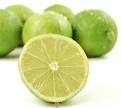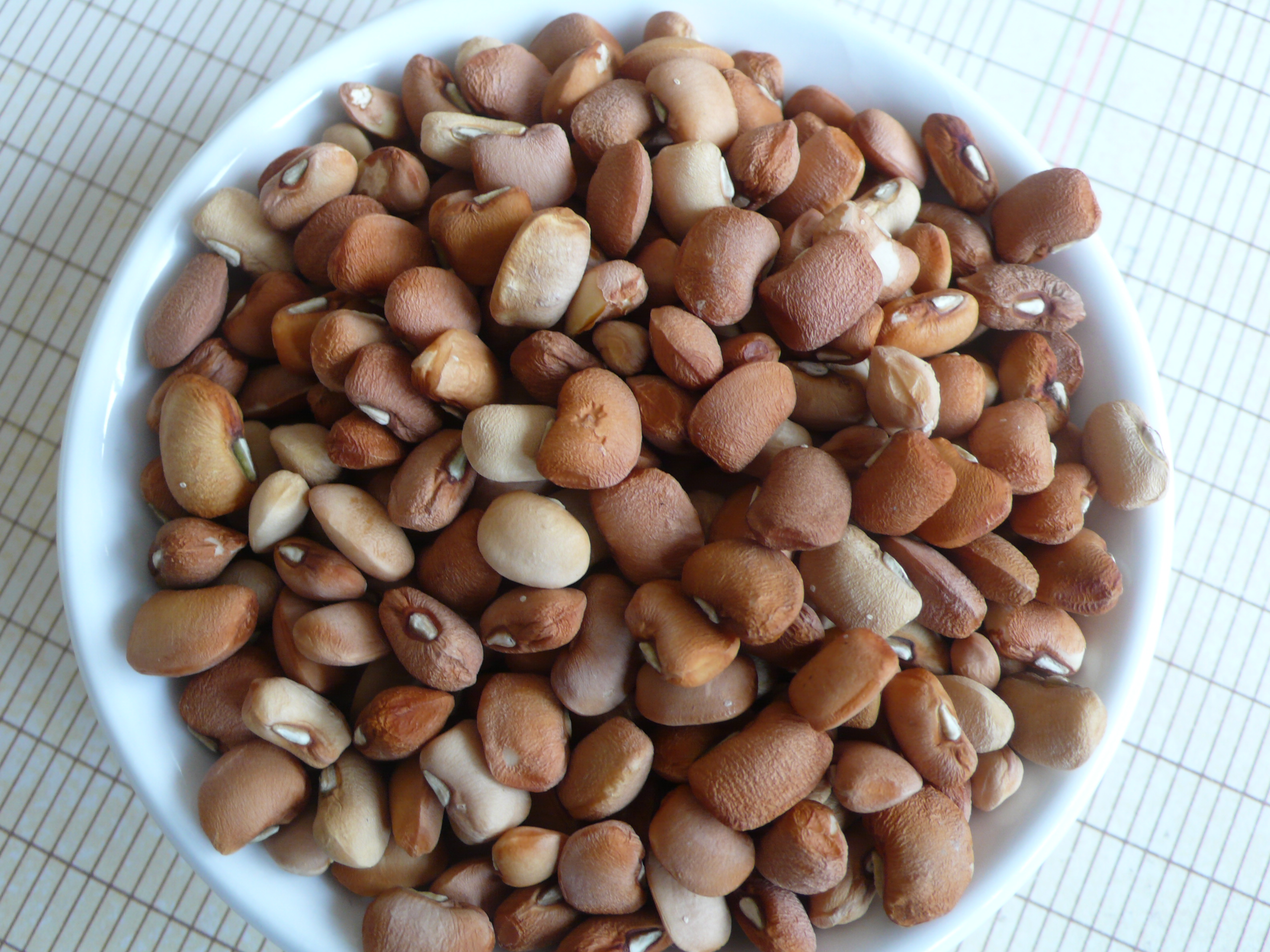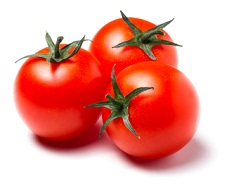The benefits of beans are so numerous that we can’t say enough in praise of a
beans diet.
Healthy beans are
so outstanding that only green vegetables come close as a valuable food
source. Beans are so loaded with nutrition and taste that we’ve listed
nine reasons below to devour huge quantities of beans – beginning today.
Beans & Protein
Thanks to a relentless campaign from food industries, we have a
highly exaggerated idea of the amount of protein that is needed by our
bodies. In fact, we only need a small percentage of the amount we
usually get. If you staunchly refuse to believe this statement, consider
mother’s milk, which contains only 1.6 grams of protein per 1/2 cup,
less than one half the protein of cow’s milk. The greatest growth time
of our lives is when we are babies, so if we needed huge amounts of
protein wouldn’t mother’s milk, the “perfect food”, provide it?
In fact, there are serious dangers to high protein diets. Two
examples are: osteoporosis and kidney disease. The bone thinning
disease of osteoporosis is an epidemic in the United States and high
amount of protein have unquestionably played a huge part in this
explosion. High protein diets cause calcium to be lost in the urine.
This calcium does not come from the meat – it comes from our bones.
Animal products create uric acid which makes our blood acidic. Calcium
is the mineral that is most needed by the body to fight acidity – and in
its valiant attempt to protect itself, the body pulls this needed
calcium from the bones, the most abundant source we have.
Further, if we eat more protein than the human body can use, it is
broken down and excreted which overworks the kidneys by increasing the
amount and flow of urine. The “nephrons”, which are the kidneys filter
units, gradually die off in the process.
So, yes, we need protein – but not a huge amount of it and the best
advice is to stick to plants. A variety of plant foods provides all the
protein we need and, contrary to a popular myth, we don’t need to
‘combine’ those proteins in any special way to get all eight amino acids
that the body doesn’t produce. That notion began with an influential
book, Diet For A Small Planet. The author, Frances Moore Lappe, later
recanted, admitting she was in error. If only all errors were so readily
admitted!
Fiber And Beans
There are two kinds of fiber. The first is “insoluble” fiber, alias
‘roughage’, which can’t be used by the human body. Instead it moves on
through, carrying out waste products and toxins. The more insoluble
fiber we have, the less likely we are to retain foods inside our bodies
which keeps them from putrefying. Yes, that’s a gross thought but that
doesn’t make it any less true.
“Soluble” fiber becomes gooey and helps to process fats, lowers
cholesterol and slows the release of carbohydrates into the bloodstream.
Many have reported a lower cholesterol score just from consuming more
fiber.
Quite simply, fiber is what makes you feel full! Obviously, if we
feel full we will eat less and be more satisfied, our appetite will be
more easily controlled and we will either lose weight or maintain a
healthy weight.
Fiber, Beans And Weight Loss
The most popular theory of dieting and weight loss for decades has
revolved around calories. Experts have loudly proclaimed that there is
an immutable formula for calories in, calories out but, in fact, all
calories are not the same because some calories require much more
digestion than others. The harder your body has to work to digest those
calories, the less of them will be absorbed. The difference between a
spoonful of sugar and a spoonful of beans is startling. In fact, if
you’d like to reduce your calorie “price” by 10%, add an extra 14 grams
of fiber. This means that if you eat 2,000 calories per day, and add 28
grams of fiber to your meals, those calories will only “count” as 1600.
Cool!
It’s easy to get 30, 40, 50 or more grams of fiber a day. There are four foods that supply lots of healthy fiber …
* Beans
* Vegetables
* Fruits
* Whole grains
… and in that order, with beans being the best source of fiber. Set a
target of at least 40 grams per day. Beans have approximately 15 grams
of fiber per cup.
Fiber, Beans & Blood Sugar
Scientists rate how quickly foods release their natural sugars into
the bloodstream using a number called the glycemic index or GI. Foods on
the low end of the glycemic scale release their natural sugars slowly
over a period of time. Probably most resident in the western world have
experienced the famous ‘sugar high’ and researchers are positive that
sugar – literally – acts like a drug on the human system. In fact, some
scientists have compared sugar to heroin!
Low glycemic foods, on the other hand, release their sugars more
slowly and steadily, acting a constant source of energy. These foods
don’t send your blood sugar skyrocketing only to crash soon after,
causing your appetite to return and often making snacks irresistible.
And, if you’re overweight, your body tissues are most likely more
sensitive to insulin, the hormone that controls your blood sugar.
What makes a food low or high on the glycemic scale? It’s about the
carbohydrate molecules of the substance. With low-GI food, the molecules
are stacked and dense and have been compared to a stack of logs waiting
to be burned in the winter fireplace. When the agents of digestion in
your body – your enzymes – go to work on these logs, it takes a long
time to burn them and that’s why your blood sugar isn’t much affected.
High GI carbs are more like branches or twigs, with their molecules
spread apart and surrounded by space. Your enzymes quickly break them
apart, releasing all their sugar into the blood at more or less the same
time.
Guess who’s the undisputed champion of the low GI food groups? That’s
right: legumes – beans, peas, lentils – with green veggies being a
close second, calorie for calorie.
A Beans Diet And Leptin
A few years ago, it was discovered that a hormone named “leptin” [its
name comes from the Greek word 'leptos' which means 'thin'] controlled
the human appetite. There was an incredible excitement over this
discovery and the dieting world hailed
The Answer for all overweight folks. Unfortunately,
leptin from outside sources has thus far been a huge flop.
Leptin is made by our body’s fat cells. When the cells realize there
is enough nourishment available, [meaning you're not starving yourself
by dieting!] they release leptin into the bloodstream which has two
important effects:
* Your appetite declines …
* Your metabolism is boosted and thus calories are consumed more quickly …
Plant based, low-fat foods help to keep leptin levels high – while
fatty foods, like animal products, suppress your leptin supply. And
guess what? Beans are only 2-3% fat which means they raise your leptin
levels and reduce appetite, while causing your metabolism to work harder
and faster.
LEAN GROUND BEEF
Amount: 4 ounces
Calories: 306
Fat grams: 20
Protein grams: 23
Fiber in grams: 0
BLACK BEANS
Amount: 8 ounces [twice as much as the beef above]
Calories: 227 [discount by 10%-30% due to high fiber content]
Fat grams: .09
Protein grams: 17.9
Fiber in grams: 15
Nutrients & Beans
Beans are loaded with nutrients that our bodies crave:
B Vitamins: are necessary for healthy brain and nerve cells, for normal functioning of the skin, nerves and digestive system.
Calcium: for strong bones and teeth and to help keep the body more alkaline, rather than acidic.
Potassium: helps reduce the risk of high blood pressure and stroke.
Folate: a B vitamin that our bodies don’t produce
yet dry beans are our single best source of this important vitamin which
helps protect against heart disease and cancer.
These Healthy Beans Are Inexpensive
Beans are cheap! In fact, there is nothing, absolutely nothing, in
the grocery store that is a bigger bargain than beans, peas and lentils.
Yesterday I bought an entire pound of black eyed peas for $1.29.
Granted, I normally pay more than that because I almost always buy
organic beans. But even those babies are only about double the price of
the ones grown with chemicals. Considering their nutritional punch,
there simply is nothing in the store that is a better buy than beans.
Check out the dried beans and lentils in your store and see for
yourself. And if you can buy them in bulk, the way I do, they’re even
cheaper.
A Huge Variety Of Beans
There are all kinds of beans available for most any palate … unless
you’re one of those unfortunates that really detest beans. Sorry about
that.
For instance, my least favorite bean is the kidney bean. I don’t
dislike it, I just prefer other kinds and fortunately there are a myriad
of choices. These are just a few that are quite popular in the US:
* kidney beans
* soy beans
* garbanzo beans
* adzuki beans
* lima beans
* red lentils
* green lentils
* brown lentils
* black beans
* black eyed peas
* broad beans
* red beans
* butter beans
* fava beans
* great northern beans
* haricot beans
* mung beans
* navy beans
* pinto beans
* yellow split peas
* green split peas
* white beans
Versatile, Healthy Nutrition
It’s impossible to even guess how many bean recipes exist on this
planet. One thing is for sure – the number is in the hundreds of
thousands and most likely the millions. If I assigned you the task of
listing 100 different bean recipes, you could certainly do it. So in an
effort to reinforce their versatility, here are some major headings:
Bean Main Dishes: beans are in stews and casseroles;
they’re baked with meat; in some cultures, like that of Mexico, they’re
unique dishes that are served constantly [think tacos, enchiladas,
chalupas]; cattle drives moved across American eating huge pots of beans
at every meal; Indian tribes ate beans for thousands of years.
Vegetarian Bean Main Dishes: vegetarians like me
frequently fix main dishes without meat, using beans as the filling
ingredient, rather than animal products. I frequently make chilis with
beans and baked beans are common. With a salad and crusty bread, they’re
yummy!
Baked Beans: are the most famous bean dish and
they’re baked with all kinds of different ingredients: onions, garlic,
barbecue sauce, cranberries, mushroom, pineapple – even Dr. Pepper and
beer.
Bean Salads: everyone has eaten cold beans in
salads. I recently ate a cold bean, mandarin orange and purple onion
salad that had me threatening mayhem to the person of the hostess if she
didn’t hand over the recipe. :-)
Bean Soups: there are bean soups in cultures all
over the planet from Cuban black bean soup to Mexican spicy soups to
French Canadian pea soup and my favorite, our American Senate Bean Soup.
Bean Dips: are a favorite of most people and are
quite popular at all kinds of social gatherings and surely go well at a
Super Bowl party with a huge bowl of chips.
Chili With Beans: chili without beans is simply a
total flop. Actually, the beans are more important than the meat because
there are meatless chilis but virtually no chilis without beans. Some
folks cook the beans and meat in a separate pot and mix them together
when served.
Bean “Breads”: beans have become so popular that
there are many bean flours available these days, and they can be used
like grain flours to make bread, pasta, muffins and loaves.
Bean Desserts: while not as common, there certainly
are bean desserts. Asians often eat a red bean ice cream [which I've
never eaten, but definitely will the first chance I get] and there are
other goodies like a Pinto Bean Pie and an orange garbanzo cake.
If the benefits of beans can’t persuade you to give this delightful
food group and try, then consider this: beans are tasty! There are a
bazillion bean recipes available for you to try and simple
experimentation might lead you to find healthy beans that you truly
enjoy. After all, humans have been eating beans for – literally –
millenia and they didn’t eat them for any reason of ‘bean nutrition’.
They just ate them because they’re yummy. Anything that I like to eat
that makes me healthier definitely gets an A+.















